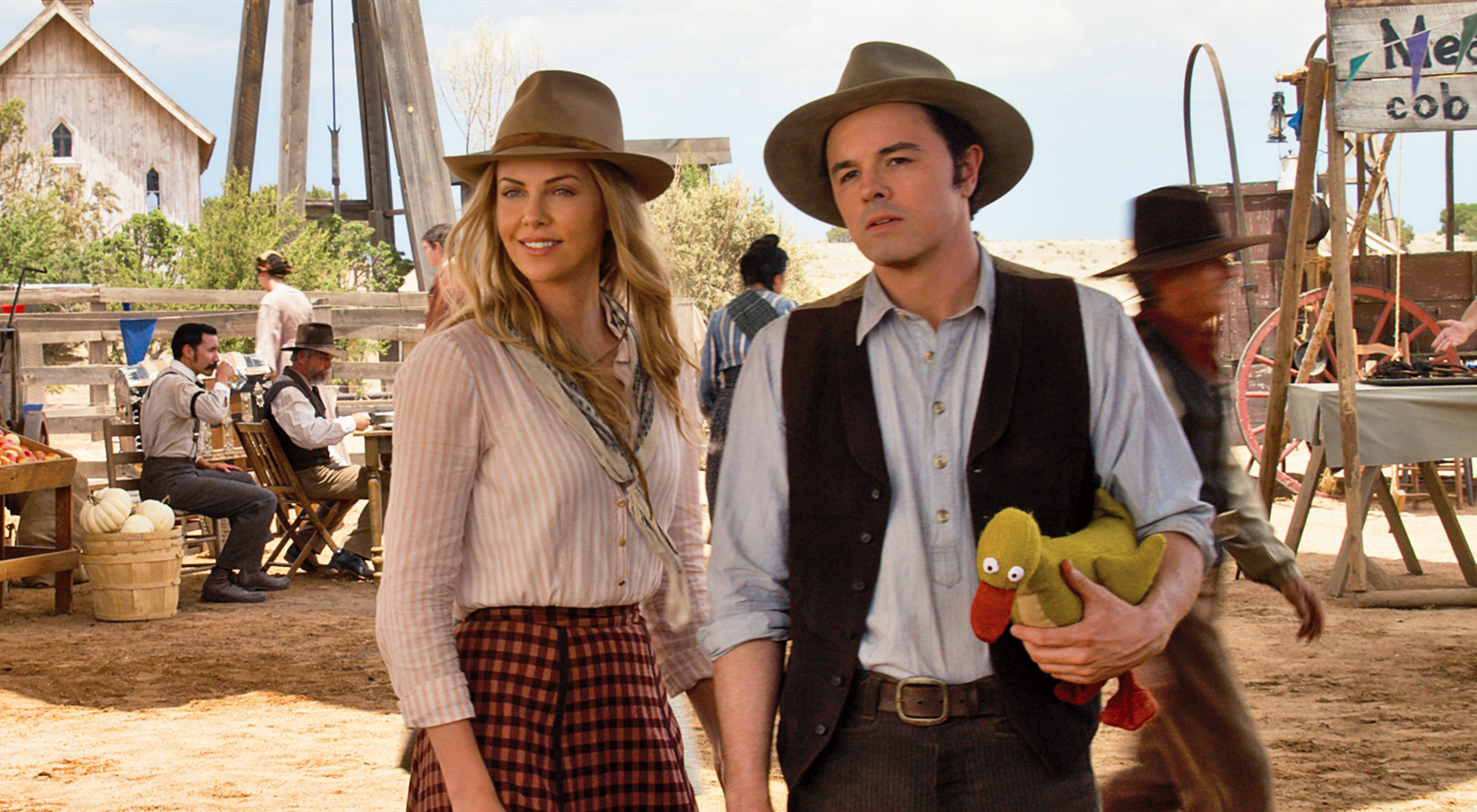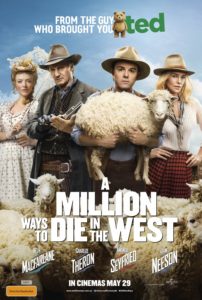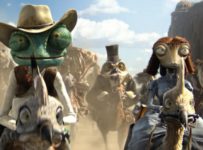Seth MacFarlane’s second feature expands his horizons, with a million ways to laugh (and cringe) in the west.
Director: Seth MacFarlane
Writer: Seth MacFarlane, Alec Sulkin, Wellesley Wild
Runtime: 116 minutes
Starring: Seth MacFarlane, Charlize Theron, Amanda Seyfried, Liam Neeson, Neil Patrick Harris, Giovanni Ribisi, Sarah Silverman
Distributor: Universal (Australia)
Country: US
Rating (?): Better Than Average Bear (★★★½)
Seth MacFarlane‘s suite of irreverent animated TV comedies are often a love ’em or hate ’em prospect, with his trademark barrage of non sequitur‘s treading the fine line between humour and the just plain strange. With 2011’s Ted, MacFarlane took his successful formula and transplanted it to the big screen, in a mostly live-action original creation that sometimes stretched the gag of a very naughty bear out over a feature length episode. Learning from that experience, A Million Ways to Die in the West focuses more on narrative, but not at the expense of the expected gags.
Mostly written as a showcase for MacFarlane, the co-writer/director is Albert Stark, a sheep farmer who seems completely out of time and place in Arizona, 1882. After talking his way out of a gun duel, he loses the love of his life Louise (Amanda Seyfried) to Foy (Neil Patrick Harris), the purveyor of fine products at the local moustachery. Hurt and confused by his sudden rejection, Albert soon meets Anna (Charlize Theron), a woman who seems to share his sensibilities and encourages him to develop his confidence, and his gunplay. Yet her husband is the famed gunslinger Clinch (Liam Neeson), and he’s none too happy about Albert laying hands on his woman.
The very knowing script is partly a love-letter to Westerns, and so it’s less Blazing Saddles and more in keeping with the R-rated reference-based comedy that MacFarlane is best loved for. It does share the very modern sensibility of the Mel Brooks classic, and this is what makes A Million Ways to Die in the West so damned charming. Surrounded by people who accept death as an inevitability (“People die at the fair”), MacFarlane is less Peter Griffin and more Woody Allen, incredulous that nobody else can see the world through his anachronistic goggles. This results not only in some surrealist sight gags, including a blue jay being used to peck out a wound at the local doctor, but in a rapid-fire series of escalating one-liners and observations. As the title would imply, disaster is literally around every corner, and MacFarlane’s skill is not just in taking you off-guard but throwing in one last kick to destroy the line he’s just crossed.
At least half of the joy is in seeing an amazing assemblage of actors playing against type, or allowing themselves to be completely enveloped in it. MacFarlane and Theron play it straight, allowing for the over-the-top Neil Patrick Harris to chew his way through scenery. Even the size of Amanda Seyfried’s eyes don’t escape the wholesale assassination of sacred cows. Occasionally, it’s an uneasy fit, with MacFarlane’s penchant for pushing things that one step too far resulting in some incredibly base (but not entirely unwelcome) gags that cover the gamut of anal sex to the ol’ reliable diarrhoea-in-a-hat bit. The hapless shoemaker Edward (Giovanni Ribisi) doesn’t bat an eyelid at the increasingly detailed exploits of his girlfriend Ruth (Sarah Silverman), a prostitute. However, this one-note gag feels drawn-out over the course of the film, and is one of the many signs that the film could have benefited from a tighter edit.
Yet with a tonne of jokes delivered every minute, there are more hits than misses here. MacFarlane demonstrates an ability to move beyond the simple gag-based structure, showing real character growth and some sweet moments between Theron and MacFarlane in particular. Beneath all the humour, there’s a truthful core about self-belief and moving on from the people that are holding you back and treating you poorly. Peppered with cameos, including two from other modern spins on the western, it’s hard to not at least smile throughout.





